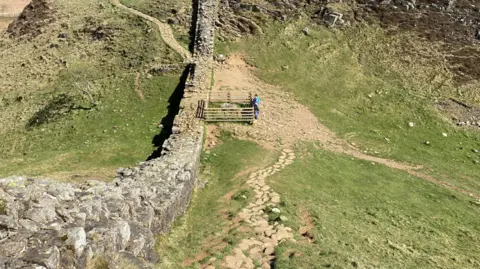The Enduring Legacy of the Sycamore Gap Tree: History, Impact, and Global Outcry
The Sycamore Gap tree was not just a tree. Nestled next to Hadrian’s Wall in Northumberland, England, it became an instantly recognizable symbol of the British countryside. For over 200 years, this iconic sycamore stood as a sentinel, admired by hikers, photographers, and history lovers alike. When the tree was deliberately felled in September 2023, the nation—and the world—mourned its loss. In this article, we explore the tree’s significance, the events leading to its felling, and its lasting impact on local and global communities.

A Landmark Steeped in History
The Sycamore Gap tree stood in a dramatic dip along Hadrian’s Wall—an ancient Roman fortification and UNESCO World Heritage site built nearly 1,900 years ago. Its unique position made it one of the most photographed trees in England. Many will remember its appearance in the 1991 film "Robin Hood: Prince of Thieves," further cementing its place in popular culture.
For locals, the sycamore gap tree was more than a backdrop. It was a beloved part of Northumberland’s landscape, winning titles such as English Tree of the Year in 2016. Visitors often described the serene moment of seeing the solitary tree framed against the open sky—a connection to natural and cultural heritage in one breathtaking view.
The Fateful Night: Vandalism and Outrage
Everything changed in the early morning of September 28, 2023. Park ranger Gary Pickles, first to arrive at the scene, was stunned to find the tree lying on its side. Initially suspecting storm damage, he was shocked to realize it had been felled deliberately. In his words, discovering the clean cut instantly escalated the situation into a global news event. The emotional response was swift; staff at the National Trust and Northumberland National Park described it as a loss akin to losing a loved one. Read more on how the park ranger alerted the world to the Sycamore Gap tree's fate.
Local and international press quickly descended on the scene. The tranquil site turned into a crime scene, complete with forensic teams and police tape. The magnitude of the Sycamore Gap tree’s loss was felt far beyond England, with people worldwide expressing sadness and disbelief.
Justice Served: The Conviction of the Culprits
The investigation led to the arrest of two men, Daniel Graham and Adam Carruthers. In May 2025, both were found guilty of criminal damage. The court revealed details of their actions: driving at night to reach the site, felling the tree in under three minutes, and joking about their crime afterwards. The jury determined they had caused over £622,000 in damage to the tree and additional harm to Hadrian’s Wall itself.
For more on the trial and its outcome, see reports from NPR and CNN, which detail how both men were sentenced for their actions. Prosecutors stressed that there was no justification for the act, calling it "mindless vandalism" and highlighting the deep pain it caused to countless people.
A Gap in the Landscape—and in Our Hearts
The Sycamore Gap tree’s absence has left a literal and metaphorical hole in the landscape. Many still visit the site, pausing by the now iconic stump as a form of remembrance. Plans to use saplings from the tree as symbols of hope are underway. The outcry and global attention surrounding this loss demonstrate the profound connection people feel to their natural and historical heritage.
Preserving Memory and Moving Forward
While the Sycamore Gap tree can never be replaced, its story serves as a powerful reminder of how a single tree can unite people across the world. Communities continue to honor its memory and reflect on the importance of protecting our shared heritage.
Have you visited Hadrian’s Wall or have memories of the Sycamore Gap tree? Share your thoughts and keep the story alive.